The Bristol Post picked up a story last Tuesday that should have been told long ago…long enough ago that the story qualifies as LGBT history. And that’s likely why the article was written: it’s LGBT History Month in the UK.
I have to admit that I’m not as familiar with the story myself as I should have been, so I had to spend a few days educating myself…and then a day or two deciding how to deal with the slippages of reality I encountered in so doing.
The title of the Post article was Op by unknown doctor was a world first. And that is true, but I’m not so sure that the Post really understands the history in its totality. The title of the February 16, 2013 talk, Michael Dillon: The Man Who Invented Transsexuals by Cheryl Morgan, which is is being presented at Studio 1, M-Shed, Princess Wharf and sponsored by OutStories Bristol stretches the truth terribly.
So what’s this all about?
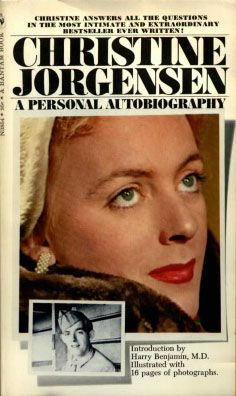 Most people, if you asked them who the first modern transsexual person was, if they had any knowledge at all, would point to Christine Jorgenson. The former US Army soldier heard about the possibility of sex reassignment surgery when she returned from her service to the Bronx and intended to travel to Sweden to see about obtaining treatment. But she stopped in Copenhagen on her way and met Danish endocrinologist Dr. Christian Hamburger, who began her on hormone replacement therapy.
Most people, if you asked them who the first modern transsexual person was, if they had any knowledge at all, would point to Christine Jorgenson. The former US Army soldier heard about the possibility of sex reassignment surgery when she returned from her service to the Bronx and intended to travel to Sweden to see about obtaining treatment. But she stopped in Copenhagen on her way and met Danish endocrinologist Dr. Christian Hamburger, who began her on hormone replacement therapy.
With special permission from the Danish Minister of Justice, Jorgensen had his [sic] testicles removed first and his [sic] still-undeveloped penis a year later. Several years later Jorgensen obtained a vaginoplasty, when the procedure became available in the U.S., under the direction of Dr. Joseph Angelo and a medical advisor Harry Benjamin.
–Ms. Jorgenson’s obituary
Dr. Angelo was the husband of one of her classmates at Manhattan Medical and Dental Assistant School.
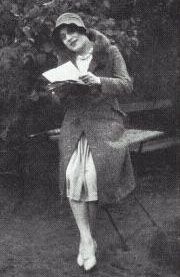 The New York Daily News broke the news: Ex-GI Becomes Blonde Beauty. The Daily News claimed Jorgenson was the first sex-change recipient. They were, as often is the case, quite wrong. German doctors performed such surgeries on artist and model Lili Elbe (the former Einar Wegener) and a transwoman identified as Dorchen Richter in the 1920s and 30s. Elbe was celebrated as the first, but she died of complications the next year). Both Lili and Dorchen were patients of Magnus Hirschfeld. Dorchen was in fact a housemaid at Hirschfeld’s Institut fur Sexualwissenschaft (after a raid on Hirschfeld Institute was organized by the Nazi’s (while Hirschfeld was in France) all his carefully collected papers were burned. Dorchen Richter disappeared. Nobody knows if she was killed by the mob, died later in custody, or perhaps even survived. What is known is that the actions by the Nazi mob set back progress by transpeople by at least a generation…and laid the groundwork for public hatred of us.
The New York Daily News broke the news: Ex-GI Becomes Blonde Beauty. The Daily News claimed Jorgenson was the first sex-change recipient. They were, as often is the case, quite wrong. German doctors performed such surgeries on artist and model Lili Elbe (the former Einar Wegener) and a transwoman identified as Dorchen Richter in the 1920s and 30s. Elbe was celebrated as the first, but she died of complications the next year). Both Lili and Dorchen were patients of Magnus Hirschfeld. Dorchen was in fact a housemaid at Hirschfeld’s Institut fur Sexualwissenschaft (after a raid on Hirschfeld Institute was organized by the Nazi’s (while Hirschfeld was in France) all his carefully collected papers were burned. Dorchen Richter disappeared. Nobody knows if she was killed by the mob, died later in custody, or perhaps even survived. What is known is that the actions by the Nazi mob set back progress by transpeople by at least a generation…and laid the groundwork for public hatred of us.
What was new with Jorgenson was the regimen of hormones.
When Jorgenson returned to New York in 1953, she became an instant celebrity. Not all of her celebrity, of course, was positive.
So who is Michael Dillon? Well, he was the first recipient of a female to male sex reassignment. Laurence Michael Dillon was named Laura Maud Dillon at birth on May 1, 1915. His mother died 10 days later of sepsis. He and his older brother were raised by two aunts in Folkestone, Kent, England after they were rejected by their father.
Dillon’s father and grandfather both died in 1925, making her brother the eighth Baron Dillon.
Dillon was educated at Oxford, where he became president of the Oxford University Women’s Boat Club and won a University Sporting Blue for rowing. After graduation in 1938 he worked in a research laboratory in Gloucestershire.
People thought I was a woman. But I wasn’t. I was just me
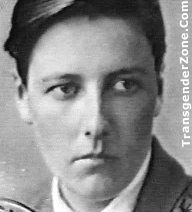 Dillon had taken to wearing men’s clothing and reported that he did not feel like a woman. In 1939 he approached Dr. George Foss who had been studying the effects of testosterone in reducing excessive menstrual bleeding. Foss provided Dillon with testosterone pills but insisted that Dillon see a psychiatrist before taking them. Dillon did so, only to see the psychiatrist spread gossip about him all over town. Dillon fled to Bristol.
Dillon had taken to wearing men’s clothing and reported that he did not feel like a woman. In 1939 he approached Dr. George Foss who had been studying the effects of testosterone in reducing excessive menstrual bleeding. Foss provided Dillon with testosterone pills but insisted that Dillon see a psychiatrist before taking them. Dillon did so, only to see the psychiatrist spread gossip about him all over town. Dillon fled to Bristol.
In Bristol he took a job in a a garage. Having been dosing himself with the testosterone pills, he soon appeared totally male, so much so that his boss asked all Dillon’s coworkers to refer to Dillon with male pronouns to avoid confusing the customers. Eventually Dillon was promoted to tow truck driver. During the Blitz he also worked as a fire spotter.
Dillon suffered from hypoglycemia and passed out a couple of times due to low blood sugar. After the second of these events, while he was recovering in the Royal Infirmary from hitting his head when he fell, he met a doctor who was one of the world’s few plastic surgeons at the time. This unidentified surgeon performed a double mastectomy on Dillon and wrote Dillon a document which enabled him to have his birth certificate changed. He was also put in touch with pioneering plastic surgeon Harold Gillies.
Amending his birth certificate to read “son” instead of “daughter” and changing the name from “Laura Maud” to “Laurence Michael” upset his brother greatly…and all ties between them were severed.
Gillies had experience treating intersex people with ambiguous genitalia and also had worked reconstructing penises for wounded soldiers. Gillies was willing to perform a phalloplasty on Dillon, but was swamped with war casualties who needed treatment. So while he waited, Dillon attended the medical school at Trinity College in Dublin under his now legal name, Laurence Michael Dillon. One of his former tutor’s had influence with one of the registrar of the college, who altered Dillon’s records to show that he had graduated from Brasenose rather than the women’s college St. Anne’s at Oxford. while at Trinity, Dublin again took up rowing, this time for the men’s team.
Gillies performed at least 13 surgeries on Dillon from 1946 to 1949. He had diagnosed Dillon with acute hypospadias in order to hide the fact that he was performing a sex altering surgery. He enjoyed dancing but avoided close relationships with women.
One must not lead a girl on if one could not give her children.
–Michael Dillon
In order to maintain his distance, he adopted and reinforced the reputation of a misogynist.
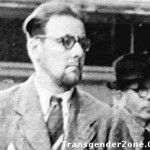 In 1946 Dillon published a book entitled Self: A Study in Endocrinology and Ethics, in which he described “masculine inverts” as people born with “the mental outlook and temperament of the other sex”, using Stephen Gordon in the novel The Well of Loneliness as an example. Since this form of inversion was innate – a hidden physical condition similar to intersexuality – it could not be affected by psychoanalysis and should instead be treated medically.
In 1946 Dillon published a book entitled Self: A Study in Endocrinology and Ethics, in which he described “masculine inverts” as people born with “the mental outlook and temperament of the other sex”, using Stephen Gordon in the novel The Well of Loneliness as an example. Since this form of inversion was innate – a hidden physical condition similar to intersexuality – it could not be affected by psychoanalysis and should instead be treated medically.
Where the mind cannot be made to fit the body, the body should be made to fit, approximately at any rate, to the mind.
–Michael Dillon
The book attracted the attention of Roberta Cowell, Britain’s first transsexual woman. Dillon performed an orchiectomy on Cowell while he was still a medical student (the operation was illegal in England at the time). Gillies later performed a vaginoplasty on Cowell.
Pagan Kennedy wrote about Dillon and Cowell’s short-lived romance in The First Man-Made Man: The Story of Two Sex Changes, One Love Affair, and a Twentieth-Century Medical Revolution, published in 2008.
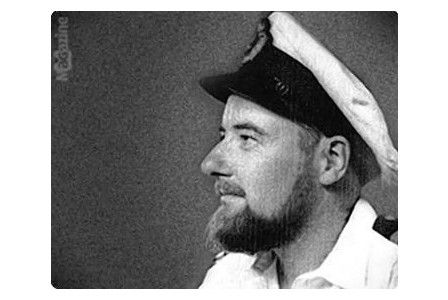 Dillon qualified as a doctor in 1951 and began working at a hospital in Dublin. He proposed marriage to Cowell. But she turned him down.
Dillon qualified as a doctor in 1951 and began working at a hospital in Dublin. He proposed marriage to Cowell. But she turned him down.
Dillon’s response was to join the merchant navy, working as a doctor on various ships and writing poetry in his spare time.
Dillon did not reveal his history when he published Self. But in 1958 Debret’s Peerage listed him as heir to his brother’s baronetcy. Unfortunately Burke’s Peerage listed his brother as only having a sister. The discrepancy was noticed by a national newspaper.
When the discrepancy was noticed, he told the press he was a male born with a severe form of hypospadias and had undergone a series of operations to correct the condition. The editor of Debrett’s told Time Magazine that Dillon was unquestionably next in line for the baronetcy: “I have always been of the opinion that a person has all rights and privileges of the sex that is, at a given moment, recognized.”
The unwanted publicity caused Dillon to flee to India. He studied Buddhism with Sangharakshita in Kalimpong and then spent time in the Buddhist community in Samath.Wanting to be ordained he changed his name to Sramanera Javaka. Sangharakshita refused to allow him full ordination, so he turned to Tibetan Buddhism in frustration. He joined the Rhizong monastery in Ladakh and was re-ordained as a novice monk in the Gelupka order, choosing the name Lobzang Javaka. He was forced to leae Tibet when his visa expired. Then his health took a turn for the worse. He died in hospital at Dalhousie, Punjab on May 15, 1962.
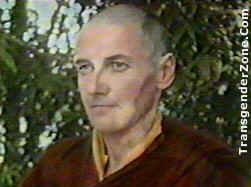 In 1960 he published Growing Up into Buddhism, a primer on Buddhist practice for British children and teens, and A Critical Study of the Vinaya, which looks at the Buddhist rules for ordination and defeat, as Sramanera Jivaka. Additionally two books by him were published in London in 1962: The Life of Milarepa: Tibet’s Great Yogi, about a famous 11th century Tibetan yogi, and Imji Getsul: An English Buddhist in a Tibetan Monastery, an account of life in a Buddhist monastery, under the name Lobzang Jivaka.
In 1960 he published Growing Up into Buddhism, a primer on Buddhist practice for British children and teens, and A Critical Study of the Vinaya, which looks at the Buddhist rules for ordination and defeat, as Sramanera Jivaka. Additionally two books by him were published in London in 1962: The Life of Milarepa: Tibet’s Great Yogi, about a famous 11th century Tibetan yogi, and Imji Getsul: An English Buddhist in a Tibetan Monastery, an account of life in a Buddhist monastery, under the name Lobzang Jivaka.
Michael Dillon’s story is a remarkable tale of courage, and of a pioneering first that Bristol should be proud of.
Thanks to him, and the kindness of two Bristol doctors, trans people all over the world now have access to medical treatment that changes their lives substantially for the better.
–Cheryl Morgan, cochair of OutStories
Michael Dillon is an important figure in our history, but he didn’t “invent transsexuals.” On the other hand he appears to have been one remarkable human being.
Michael Dillon’s is just one of the fascinating stories that have come to light when we were researching Bristol’s LGBT heritage for the Revealing Stories exhibition. This is just one small part of the hidden history of up to a tenth of the city’s population, and we hope as many people as possible will come along to M Shed to find out more.
–Andy Foyle, OutStories
It’s hard not to investigate our history without discovering a veritable plethora of remarkable human beings. It makes the view of those who seek to dehumanize us seem remarkably petty and intensely irrational.

1 comments
Author
Three inches so far…as much as a foot (or more) still to come. I’m not planning on going out for a few days.
I’m amused that Lobsang is the name of a Terry Pratchett character.